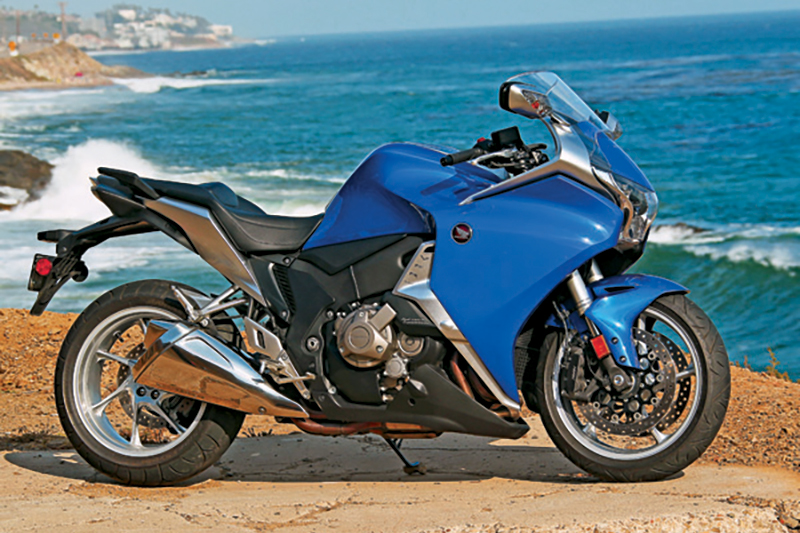2012 Honda VFR1200F DCT

Road Test Review
Honda held nothing back when it overhauled the esteemed VFR sport tourer for 2010. Engine technology and architecture was adapted from Honda’s MotoGP race bikes, the Unicam valvetrain was adapted from its motocross bikes, displacement and power were significantly increased, and styling was a unique, clean-sheet design. Honda’s boldest innovation, however, was the VFR1200F’s optional Dual Clutch Transmission, which uses separate clutches for even and odd gears and offers two automatic modes plus a paddle-shift manual mode (there’s no clutch lever or shift lever). Found in race cars and sports cars, Honda’s DCT was the first on a motorcycle. The all-new VFR1200F was so impressive, we named it Motorcycle of the Year for 2010.
Updates for 2012 include the addition of traction control, refinements to the optional DCT, more low-end torque, an extra 0.1-gallon of fuel capacity (now an even 5 gallons), fuel consumption data, a new seat and Candy Blue paint instead of Candy Red. After logging 1,400 miles on a DCT-equipped VFR, I came to appreciate every improvement Honda has made, though the small bump in fuel capacity added less than four miles of range.
Traction control, which can be easily turned off, is a good complement to the standard Combined ABS found on this powerful machine (the 2010 VFR made 150.6 horsepower and 84.4 lb-ft of torque at the rear wheel). In the Drive and Sport automatic modes, the DCT now optimizes shift points based on throttle input, not just engine speed. And a new manual override allows use of the paddle shifters to select gears while in Drive or Sport. Already well-designed, the DCT is now more seamless and versatile. Long hours in the saddle made me appreciate the VFR’s more comfortable seat, though the seating position still puts too much bend in my back and weight on my wrists.
